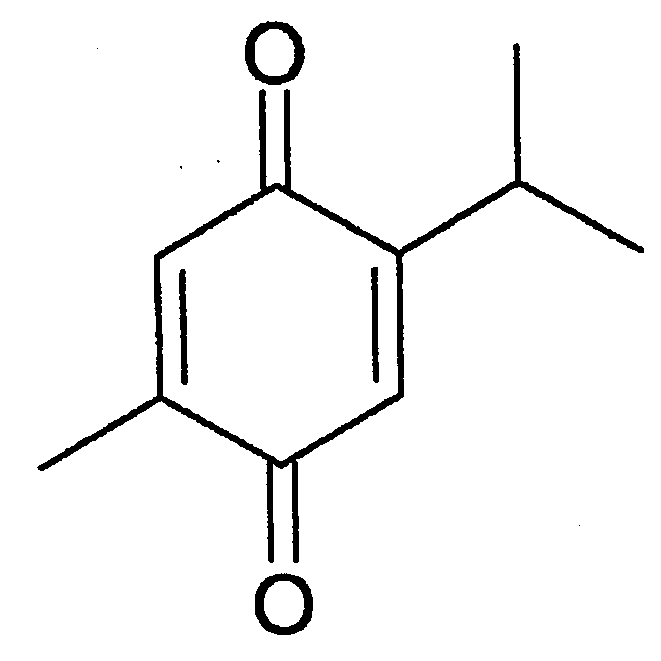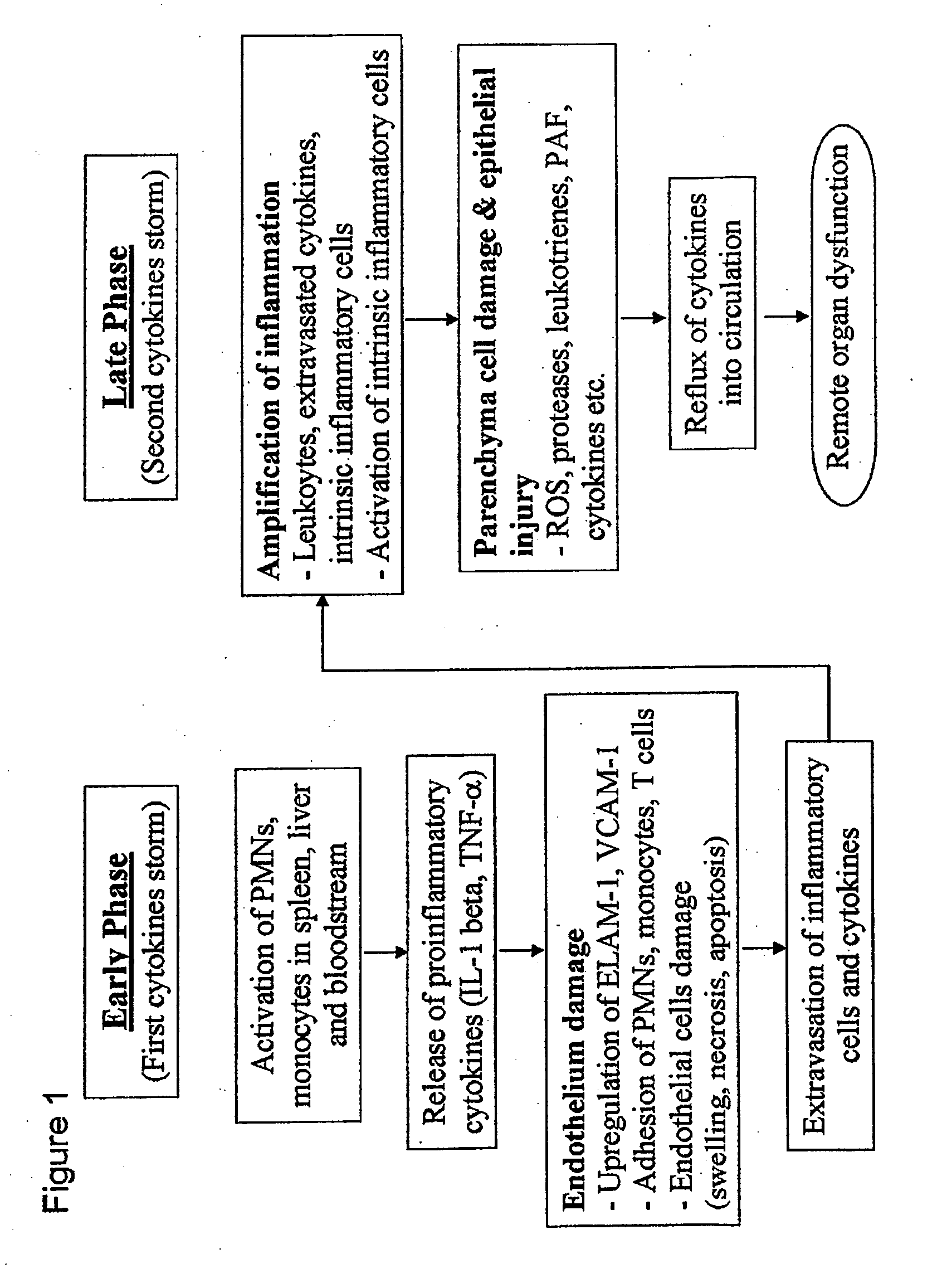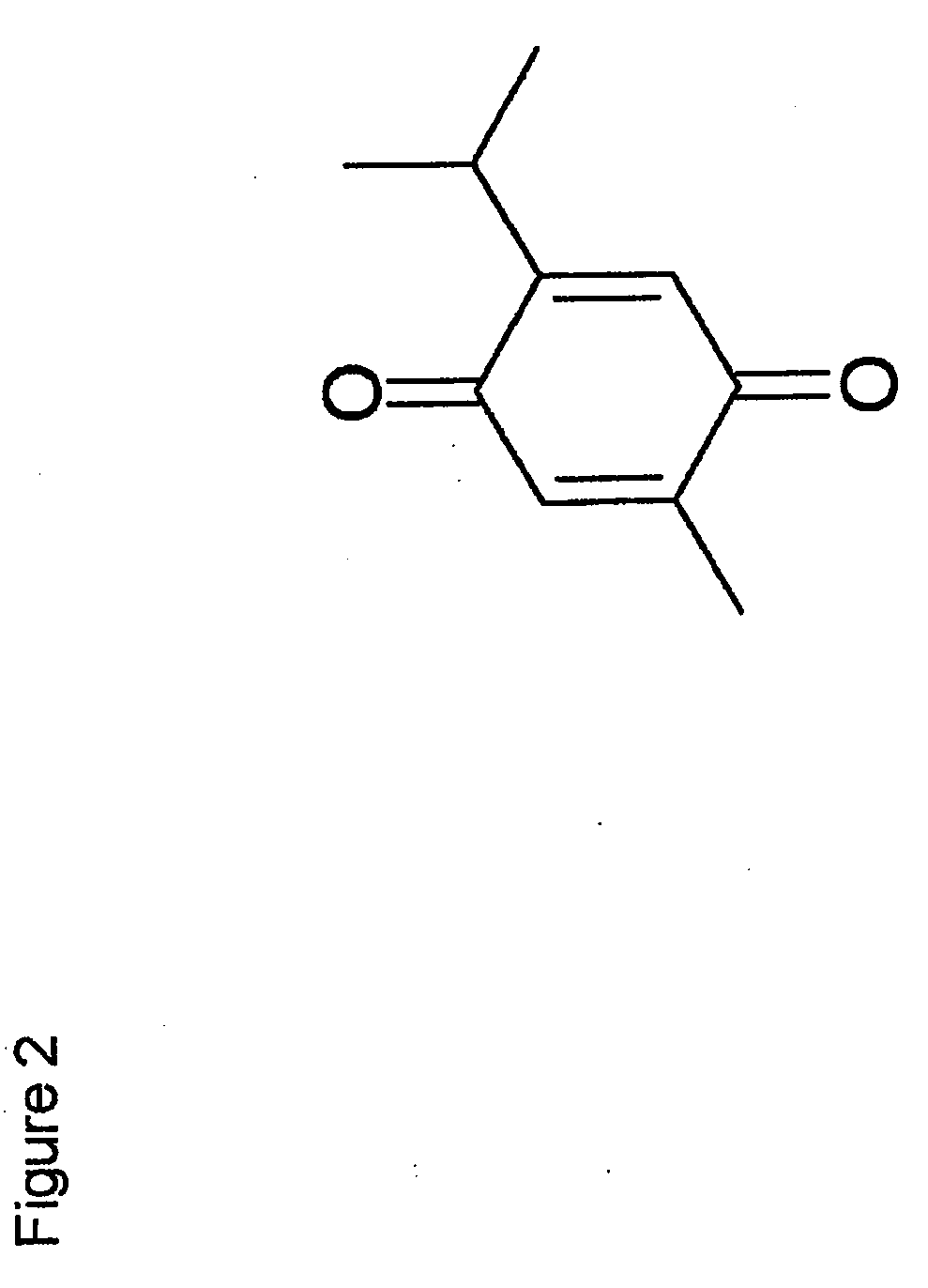Protective effect of thymoquinone in spesis
a technology of thymoquinone and spesis, which is applied in the field of protecting the effect of thymoquinone in spesis, can solve the problems of increasing the morbidity and mortality of icu patients worldwide, other anti-inflammatory drugs such as non-steroidal anti-inflammatory drugs (nsaids) did not show to be helpful in ameliorating sepsis syndrome, and the vast majority of these trials showed little success in reducing the overwhelmingly high
- Summary
- Abstract
- Description
- Claims
- Application Information
AI Technical Summary
Benefits of technology
Problems solved by technology
Method used
Image
Examples
example 1
Mouse Model of Sepsis
[0049]1.1 Endotoxin Sepsis Model (LPS Escherichia coli O111:B4)
[0050]Two groups of animals (ten mice each) weighing ˜25 g were treated intraperitoneally with 1 or 2 mg / kg (single dose) of thymoquinone prepared in 10% DMSO; a control group (treated with only 10% DMSO) was also simultaneously run. Four hours after thymoquinone treatment, all groups were challenged with 2 mg / kg endotoxin (lipopolysaccharide, LPS) prepared in normal saline. Mortality of groups was followed for 4 days, and survival (primary endpoint) was calculated using Kaplan-Meier analysis.
[0051]As shown in FIG. 3A, thymochinone provided a protective effect against mortality in endotoxin induced sepsis with about 80% (1 mg / kg) and 90% (2 mg / kg) protection efficacy, respectively (P<0.01).
1.2 Gram-Negative Bacteria Sepsis Model
[0052]Two groups of animals (twelve mice each) weighing ˜25 g were treated intraperitoneally with 0.75 or 1 mg / kg / day (for three days) of thymoquinone prepared in 10% DMSO; a ...
example 2
Immunological and Biochemical Analysis
[0055]In another set of experiments and after 6 h of E. coli administration, animals were lightly anesthetized with ether, and blood samples were collected, centrifuged and the resultant plasma were stored at −80° C. and used within 48 h. The levels of TNF-α, IL-1α, IL-2 and IL-10 were determined using an ELISA technique. Important biochemical parameters including blood serum creatinine, blood urea nitrogen, alanine transferase (ALT), albumin, and total lactate dehydrogenase (LDH) and creatinine kinase (CK) were also assessed in treated animals using commercially available kits according to the manufacturer's directions.
[0056]The data show that induced sepsis also causes injuries and disruption in the biochemical functions of many organs such as kidney and liver that was manifested as an elevation in serum levels of serum creatinine and blood urea nitrogen, ALT, and total LDH and CK.
[0057]FIG. 4 shows the organ protective effects of thymoquinone...
example 3
Estimation of Effective Dosages in Humans
[0059]Allometric scaling relates dosing information to total body weight across species using a power equation. Given an allometric relationship in animals, one can use this relationship to predict a starting dose in man that may yield desirable exposures: Doseman=Doseanimal*(Wtman / Wtanimal)0.75.
[0060]On the basis of the results obtained from the mouse model, effective dosages of thymoquinone in humans were estimated using allometric scaling. According to the body weight ratio of man to mouse, a similar effect is to be expected in humans at dosages between 0.05 and 0.25 mg / kg. Due to allometry, the effective dosages estimated for humans are smaller than that obtained for mice.
PUM
| Property | Measurement | Unit |
|---|---|---|
| body weight ratio | aaaaa | aaaaa |
| body weight ratio | aaaaa | aaaaa |
| Body temperature | aaaaa | aaaaa |
Abstract
Description
Claims
Application Information
 Login to View More
Login to View More - R&D
- Intellectual Property
- Life Sciences
- Materials
- Tech Scout
- Unparalleled Data Quality
- Higher Quality Content
- 60% Fewer Hallucinations
Browse by: Latest US Patents, China's latest patents, Technical Efficacy Thesaurus, Application Domain, Technology Topic, Popular Technical Reports.
© 2025 PatSnap. All rights reserved.Legal|Privacy policy|Modern Slavery Act Transparency Statement|Sitemap|About US| Contact US: help@patsnap.com



